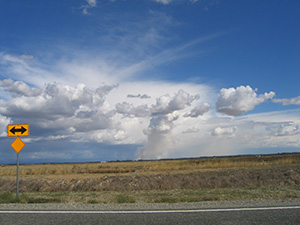 Prescribed fire is a planned fire; it is also sometimes called a “controlled burn” or “prescribed burn,” and is used to meet management objectives. A prescription is a set of conditions that considers the safety of the public and fire staff, weather, and probability of meeting the burn objectives.
Prescribed fire is a planned fire; it is also sometimes called a “controlled burn” or “prescribed burn,” and is used to meet management objectives. A prescription is a set of conditions that considers the safety of the public and fire staff, weather, and probability of meeting the burn objectives.
Prescribed fire is one of the most important tools used to manage fire today. A scientific prescription for each fire, prepared in advance, describes its objectives, fuels, size, the precise environmental conditions under which it will burn, and conditions under which it may be suppressed. The fire may be designed to create a mosaic of diverse habitats for plants and animals, to help endangered species recover, or to reduce fuels and thereby prevent a destructive fire.
Prescribed burns have been ignited to reduce hazardous fuel loads near developed areas, manage landscapes, restore natural woodlands, and for research purposes. Before any prescribed fires are permitted, a Responsible Agency must complete a fire management plan and a prescribed burn plan. Each prescribed fire must meet all the conditions identified in a go/no-go checklist before ignition. When fire cannot be used, most hazard fuel reduction is accomplished with saws and manual removal, called mechanical treatment. In some cases, it’s a multiple-step process in which a mechanical treatment is done first, then the materials are put in piles and burned when the weather allows.
